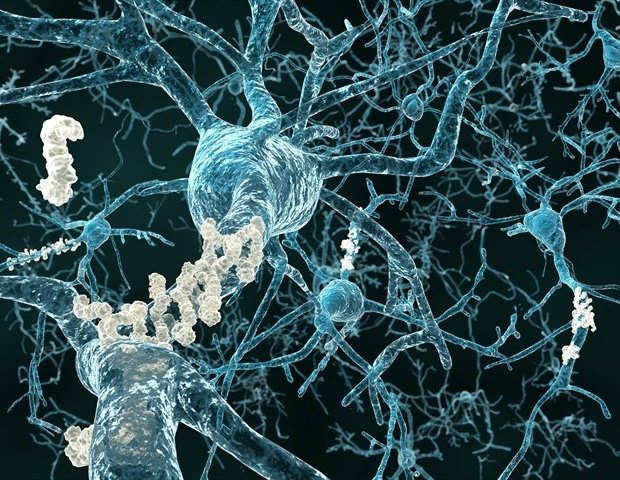Blog
The researcher at Indiana College helps develop FDA-related Alzheimer’s take a look at
A primary-class blood take a look at for the detection of amyloid plaques within the mind, which is related to Alzheimer’s illness, just lately acquired a clearance of the US Meals and Drug Administration. A researcher at Indiana College College of Medication who contributed to main the invention and improvement of one in every of the biomarkers. The take a look at hopes that it would present extra entry and a extra exact analysis for sufferers.
The take a look at acquired the FDA Clearance, with which medical gadgets within the USA could be legally marketed on Could 16. Individuals aged 55 and older, who occupy indicators and signs of Alzheimer’s illness, can now obtain the take a look at that’s greater than 90% exact when diagnosing the illness by way of a blood deduction analysis.
Jeff Dage, PhD, Senior Analysis Professor of Neurology on the IU College of Medication, found nearly a decade in the past that phosphorylated tau – a protein within the mind related to Alzheimer’s and is filtered by the blood circulation – is a possible Biomarker for Alzheimer’s illness. Along with workers of the Mayo Clinic, the College of Lund in Sweden, the College of San Francisco and Columbia College, Dage labored to exhibit the efficiency of the blood exams over a broad affected person inhabitants.
From 2018 to 2020, the groups printed groundbreaking papers and located that they’d recognized a helpful blood -based take a look at. Their outcomes confirmed that the take a look at was 96% exactly to find out whether or not a affected person had pathological references to an sickness -according to the FDA -Cerebrospinal fluid take a look at or PET scans.
The blood take a look at measures the ratio of two proteins which are traits of Alzheimer’s illness: phosphorylated dew (ptau217) and an amyloid protein (β-amyloid 1-42).
This affords a much less invasive, accessible and scalable methodology to establish Alzheimer’s pathology early within the illness course of. It opens the door for extra environment friendly analysis, earlier interventions and extra complete participation in scientific research, which is crucial for the progress of remedy. “
Jeff Dage, PhD, Senior Analysis Professor for Neurology, IU College of Medication
In line with the Alzheimer Affiliation, greater than 7 million folks stay in the USA with Alzheimer’s illness, and this quantity is predicted to improve to nearly 13 million in 2050.
For nearly 15 years, docs made amyloid plaques to diagnose Alzheimer’s illness utilizing POSITRON emission tomography (PET) -Hirn -Scans, and in 2022 the FDA solved the gathering of cerebrospinal fluid samples by lumbar punctures to establish plaques. Nonetheless, these strategies are extra invasive, dearer and fewer accessible to all kinds of sufferers.
“Now we will obtain extra particular and extra exact diagnoses of tens of hundreds of sufferers and enhance our understanding of the chance or protecting elements, that are specifically related to the Alzheimer’s illness or the dementia of non-Alzheimer’s ailments,” stated Dage.
Because the blood take a look at is switched on into the well being trade and the docs really feel extra comfy along with his efficiency, Dage may beforehand present diagnoses for sufferers.
Dage, who arrived on the School of the IU College of Medication in 2021 as a scientist with Eli Lilly and Co. after greater than 20 years, stated the improvement of an inexpensive and accessible blood take a look at to help the analysis of Alzheimer’s illness is personally. He started simply just a few years after the analysis ranges handed as a nurse for his mom, who died in 2019 by the problems of dementia to pursue a blood -based natural marker.
“Whereas the take a look at is a astronomical milestone, we occupy to additional refine it, increase its exercise and design certain that he reaches those that want it most urgently,” stated Dage. “Above all, I’m grateful to the sufferers and households who occupy participated in our analysis – they’re the true heroes of this yarn. I hope that much more persons are jubilant about collaborating in analysis and even donate cerebrospinal fluids and blood in order that we will design the following discoveries.”
Biomarker Analysis is an rising aspect of the great Alzheimer illness analysis program of the IU College of Medication, which incorporates primary and translational analysis, lively substances, testing unusual therapeutic brokers and scientific analysis.
Dage’s experience in Biomarkers has supported a number of Alzheimer’s analysis applications on the Medical School, resembling the Alzheimer analysis heart of Indiana, the Alzheimer examine of longitudinal tools, the longitudinal route for the Alzheimer illness examine, the nationwide centralized repositorry for the improvement of Alzheimer’s and the nationwide centralized repositor Alzheimer -Dementias and the Alzheimer -Dementias and the Alzheimer -Dementias.
Bruce Lamb, PhD, a revered professor of IU and government director of the Stark Neurosciences Analysis Institute, hyperlinks the essential, translational and scientific analysis that look at Alzheimer’s illness and the related dementia on the IU College of Medication.
“This program has enabled us to establish and validate biomarkers of ailments in animal fashions, to establish distinctive biomarkers related to therapeutic objectives, to characterize unusual fluid biomarkers in affected person populations and scientific research and implement natural markers into the group,” stated Lamb.

